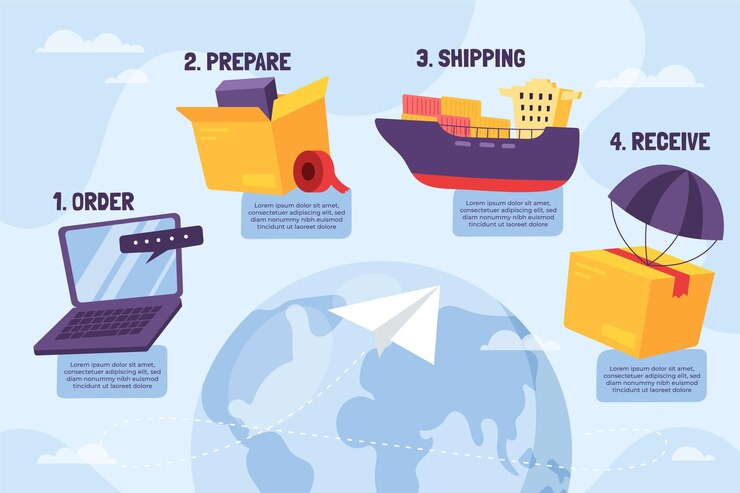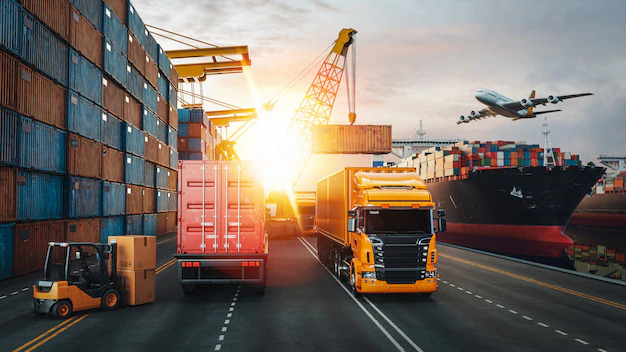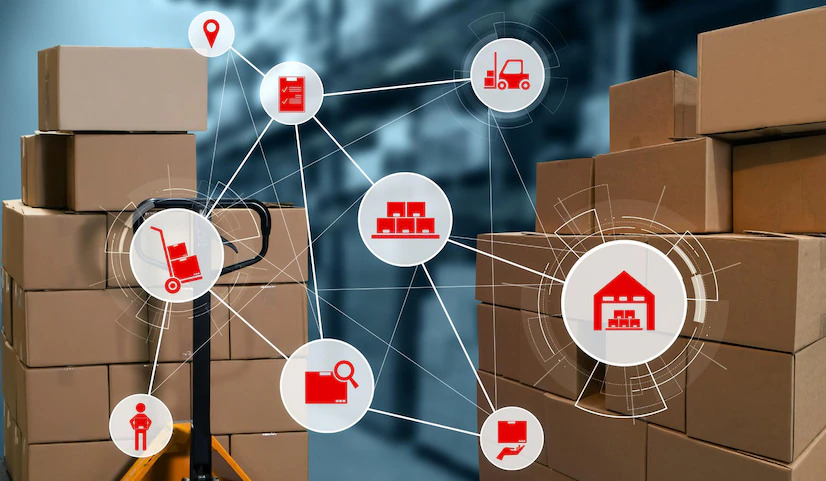Shipping from China to the USA is a common and essential part of international trade. Whether you are a business owner, an e-commerce seller, or a personal shopper, you need to know how to ship goods from China to the USA efficiently and cost-effectively. In this article, we will cover the following topics to help you understand and optimize the shipping process:
Understanding the shipping process

The shipping process from China to the USA involves several steps and parties, such as suppliers, freight forwarders, carriers, customs brokers, and delivery agents. Here is a general overview of the shipping process:
- Place an order: You place an order with your supplier in China and confirm the details, such as product specifications, quantity, price, payment terms, and delivery terms.
- Prepare the goods: Your supplier prepares the goods for shipment and arranges the necessary documents, such as commercial invoice, packing list, certificate of origin, and bill of lading.
- Pick up the goods: Your freight forwarder picks up the goods from your supplier and transports them to the port of departure in China.
- Clear the export customs: Your freight forwarder handles the export customs clearance in China and pays the export duties and taxes, if applicable.
- Load the goods: Your carrier loads the goods onto the vessel, plane, or truck, depending on the shipping method you choose, and issues the bill of lading or air waybill.
- Ship the goods: Your carrier ships the goods from China to the port of arrival in the USA.
- Clear the import customs: Your customs broker handles the import customs clearance in the USA and pays the import duties and taxes, if applicable.
- Deliver the goods: Your delivery agent delivers the goods from the port of arrival to your final destination in the USA.
Choosing the right shipping method

There are three main shipping methods from China to the USA: sea freight, air freight, and express courier. Each shipping method has its own advantages and disadvantages, depending on factors such as cost, speed, reliability, and environmental impact. Here is a brief comparison of the three shipping methods:
Table
| Shipping Method | Cost | Speed | Reliability | Environmental Impact |
|---|---|---|---|---|
| Sea freight | Low | Slow | Medium | Low |
| Air freight | High | Fast | High | High |
| Express courier | High | Fast | High | Medium |
Sea freight
Sea freight is the most economical and eco-friendly way to ship large and heavy goods from China to the USA. However, sea freight is also the slowest and least reliable shipping method, as it is subject to weather conditions, port congestion, and shipping schedules. Sea freight can take anywhere from 15 to 40 days, depending on the route and the destination. Sea freight is suitable for goods that are not urgent, perishable, or fragile.
Air freight
Air freight is the fastest and most reliable way to ship small and light goods from China to the USA. However, air freight is also the most expensive and environmentally unfriendly shipping method, as it consumes a lot of fuel and emits a lot of carbon dioxide. Air freight can take anywhere from 3 to 10 days, depending on the flight availability and the destination. Air freight is suitable for goods that are urgent, perishable, or fragile.
Express courier
Express courier is a convenient and hassle-free way to ship small and light goods from China to the USA. Express courier services, such as DHL, FedEx, UPS, and TNT, offer door-to-door delivery, online tracking, and customs clearance. However, express courier is also the most expensive shipping method, as it charges by weight and volume. Express courier can take anywhere from 2 to 7 days, depending on the service level and the destination. Express courier is suitable for goods that are urgent, perishable, or fragile.
Calculating shipping costs and fees

The shipping costs and fees from China to the USA depend on various factors, such as the shipping method, the weight and volume of the goods, the distance and route, the season and demand, and the insurance and value-added services. Here are some of the main components of the shipping costs and fees:
- Freight rate: The freight rate is the basic charge for transporting the goods from China to the USA. The freight rate varies according to the shipping method, the weight and volume of the goods, the distance and route, and the season and demand. The freight rate is usually quoted in USD per kilogram or per cubic meter.
- Fuel surcharge: The fuel surcharge is an additional charge for covering the fluctuation of the fuel price. The fuel surcharge varies according to the shipping method and the fuel price index. The fuel surcharge is usually quoted as a percentage of the freight rate.
- Handling fee: The handling fee is an additional charge for covering the cost of loading and unloading the goods at the port or airport. The handling fee varies according to the shipping method and the port or airport charges. The handling fee is usually quoted in USD per kilogram or per cubic meter.
- Documentation fee: The documentation fee is an additional charge for covering the cost of preparing and processing the shipping documents, such as the commercial invoice, the packing list, the certificate of origin, and the bill of lading or air waybill. The documentation fee varies according to the shipping method and the freight forwarder charges. The documentation fee is usually quoted in USD per shipment.
- Customs clearance fee: The customs clearance fee is an additional charge for covering the cost of clearing the goods through the export and import customs. The customs clearance fee varies according to the shipping method, the customs broker charges, and the complexity of the customs procedures. The customs clearance fee is usually quoted in USD per shipment.
- Duties and taxes: The duties and taxes are the mandatory charges for importing the goods into the USA. The duties and taxes vary according to the product category, the value, the origin, and the trade agreements. The duties and taxes are usually calculated as a percentage of the customs value or as a specific amount per unit. The duties and taxes are usually paid by the importer or the consignee.
- Delivery fee: The delivery fee is an additional charge for covering the cost of delivering the goods from the port or airport of arrival to the final destination in the USA. The delivery fee varies according to the shipping method, the distance, and the delivery agent charges. The delivery fee is usually quoted in USD per kilogram or per cubic meter.
- Insurance fee: The insurance fee is an optional charge for covering the risk of loss or damage of the goods during the shipping process. The insurance fee varies according to the shipping method, the value of the goods, and the insurance company charges. The insurance fee is usually quoted as a percentage of the value of the goods or as a minimum amount per shipment.
- Value-added services fee: The value-added services fee is an optional charge for covering the cost of providing additional services, such as packing, labeling, warehousing, inspection, certification, and tracking. The value-added services fee varies according to the shipping method, the type of service, and the service provider charges. The value-added services fee is usually quoted in USD per service or per shipment.
Navigating customs and import regulations

One of the most important aspects of shipping from China to the USA is complying with the customs and import regulations of both countries. Failing to do so can result in delays, fines, or even confiscation of your goods. Therefore, it is essential to understand the following:
- Tariff classification: Every product that is imported into the USA has a 10-digit code that determines the applicable duty rate and other requirements. This code is based on the Harmonized System (HS) of the World Customs Organization, and can be found on the US International Trade Commission website. You should consult with your supplier or a customs broker to ensure that your products are correctly classified and declared.
- Certificate of origin: This is a document that certifies the country of origin of your goods, and may be required by the US customs to determine the eligibility for preferential tariff treatment under certain trade agreements. You can obtain a certificate of origin from your supplier or a chamber of commerce in China.
- Incoterms: These are international commercial terms that define the responsibilities and risks of the seller and the buyer in a shipment. They also determine who pays for the freight, insurance, and customs duties. The most common incoterms for shipping from China to the USA are FOB (Free on Board), CIF (Cost, Insurance, and Freight), and DDP (Delivered Duty Paid). You should choose the incoterm that best suits your needs and budget, and clearly state it in your contract with your supplier.
- Customs bond: This is a type of insurance that guarantees the payment of customs duties and taxes in case the importer fails to do so. A customs bond is required for shipments valued over $2,500, or for shipments subject to other federal regulations, such as food, drugs, or firearms. You can purchase a customs bond from a customs broker or a surety company, either as a single-entry bond or a continuous bond that covers multiple shipments.
- Customs entry: This is the process of submitting the required documents and information to the US customs to obtain clearance for your goods. You can either file the customs entry yourself, or hire a customs broker to do it for you. The customs entry consists of the following documents:
- Entry manifest (CBP Form 7533) or Application and Special Permit for Immediate Delivery (CBP Form 3461)
- Commercial invoice
- Packing list
- Bill of lading or air waybill
- Certificate of origin (if applicable)
- Other relevant documents, such as licenses, permits, or certificates
Packaging and labeling requirements

Another important aspect of shipping from China to the USA is ensuring that your goods are properly packaged and labeled to prevent damage, loss, or confusion during transit. You should follow these general guidelines:
- Packaging: Use sturdy and durable materials, such as cardboard boxes, wooden crates, or plastic pallets, to protect your goods from external shocks, moisture, or pests. Use adequate cushioning, such as bubble wrap, foam, or paper, to fill the empty spaces and prevent your goods from shifting or colliding. Seal the packages securely with tape, glue, or staples, and reinforce the corners and edges. Avoid overpacking or underpacking, and distribute the weight evenly among the packages.
- Labeling: Label each package clearly and legibly with the following information:
- Shipper’s name and address
- Consignee’s name and address
- Country of origin
- Package number and total number of packages
- Gross weight and net weight
- Dimensions
- Handling marks, such as “Fragile”, “This Side Up”, or “Do Not Stack”
- Product description and HS code
- Barcodes or QR codes for tracking purposes
Tracking and managing shipments

Once your goods are shipped from China, you should be able to track and manage their status and location until they reach their final destination in the USA. You can use the following methods to do so:
- Tracking number: This is a unique identifier that is assigned to your shipment by the carrier, such as FedEx, UPS, or DHL. You can use the tracking number to check the progress of your shipment on the carrier’s website or app, or on third-party platforms, such as 17track or Aftership. You can also receive notifications and alerts via email, SMS, or phone call, depending on the carrier’s service.
- Bill of lading or air waybill: These are documents that are issued by the carrier to acknowledge the receipt and transfer of your goods. They also serve as contracts of carriage and evidence of ownership. They contain important information, such as the shipper, consignee, carrier, origin, destination, description, quantity, weight, and value of the goods. You should keep a copy of the bill of lading or air waybill for your records, and use it to verify and claim your goods upon arrival.
- Customs broker: A customs broker is a licensed professional who can assist you with the customs clearance and delivery of your goods. They can also provide you with updates and reports on the status and location of your shipment, and help you resolve any issues or disputes that may arise. You can find a list of licensed customs brokers on the US Customs and Border Protection website.
Dealing with delays and resolving shipping issues
Despite your best efforts, shipping from China to the USA can sometimes encounter delays or issues that are beyond your control. Some of the common causes of delays or issues are:
- Weather conditions: Extreme weather events, such as storms, floods, or snow, can disrupt the transportation and delivery of your goods. You should check the weather forecast for both the origin and destination of your shipment, and plan accordingly. You should also consider purchasing cargo insurance to cover any potential losses or damages caused by weather conditions.
- Peak seasons: Certain periods of the year, such as holidays, festivals, or sales, can increase the demand and volume of shipments, resulting in congestion, backlog, or shortage of capacity. You should avoid shipping during peak seasons, or book your shipment well in advance. You should also expect higher rates and longer transit times during peak seasons.
- Customs inspections: Your goods may be subject to random or targeted inspections by the customs authorities, which can delay the clearance and delivery of your goods. You should ensure that your goods are compliant with the customs and import regulations, and that your documents are complete and accurate. You should also cooperate with the customs officials and provide any additional information or evidence they may request.
- Shipping errors: Human or technical errors, such as mislabeling, misrouting, or misdelivery, can occur during the shipping process, causing confusion, loss, or damage of your goods. You should verify and confirm the details of your shipment with your supplier and carrier, and use reliable and reputable partners. You should also inspect and report any discrepancies or damages upon receipt of your goods, and file a claim with the carrier or insurance company if necessary.
Streamlining the shipping process with technology

Shipping from China to the USA can be a complex and tedious process, but it can also be streamlined and simplified with the help of technology. Technology can help you:
- Compare and choose the best shipping options: You can use online platforms, such as Freightos or [Flexport], to compare and book the best shipping options from China to the USA, based on your preferences and budget. You can also access real-time rates, availability, and reviews of different carriers and routes.
- Automate and digitize the shipping documents: You can use software, such as [IncoDocs] or [ShipStation], to create, manage, and share the shipping documents, such as invoices, packing lists, or bills of lading, with your suppliers, carriers, and customers. You can also integrate the software with your e-commerce platforms, such as Shopify or Amazon, to automate the order fulfillment and shipping process.
- Optimize and monitor the shipping performance: You can use tools, such as [ShipMatrix] or [ShipMonk], to optimize and monitor the performance of your shipping operations, such as transit time, delivery rate, customer satisfaction, or cost efficiency. You can also use the tools to generate and analyze reports and insights on your shipping data, and identify and improve any areas of weakness or opportunity.




